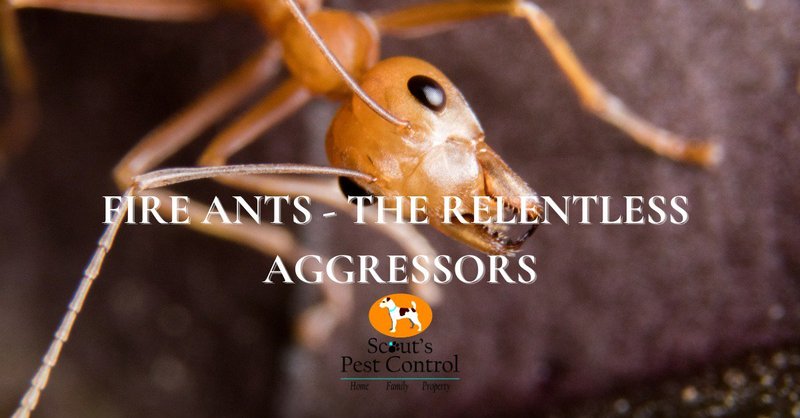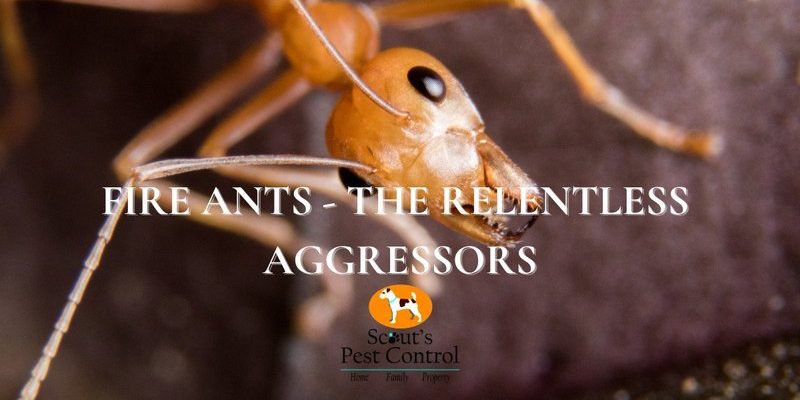
Let’s sip our coffee and dive into the world of fire ants, clearing up misunderstandings and finding out what makes them unique. Understanding their behavior and biology can help us coexist a bit better, whether you’re dealing with a pesky infestation or just curious about nature’s tiny warriors.
Myth 1: Fire Ants Can Only Live in Hot Climates
You might be surprised to learn that fire ants aren’t strictly limited to hot climates like Florida or Texas. While they thrive in warmer environments, they can actually adapt to a range of temperatures. For example, the Red Imported Fire Ant, which is notorious for its aggressive behavior, has made its way into different regions across the United States.
Think about it this way: fire ants are like your friend who can’t stand to miss a party, no matter where it is. They’ve expanded their territory by adjusting to various conditions, including cooler mountain regions and even some areas with more temperate climates.
Their ability to survive in diverse environments is due to their remarkable social structure and adaptability. This means that even if you don’t live in a swampy, sweaty part of the country, you could still encounter these little critters.
Myth 2: Fire Ants Are Just A Nuisance
Many people see fire ants as little more than a nuisance. Sure, they can ruin a picnic, but their role in the ecosystem is often overlooked. Fire ants are not just aggressive stingers; they play a crucial part in their environment.
For one, they help in soil aeration. When they build their mounds, they create tunnels that allow air and water to reach the soil better. This is like nature’s way of tilling the land! Also, they can consume pests and help control certain insect populations, acting as a natural pest control service.
While it’s easy to focus on how they sting and invade our space, their contributions to the ecosystem deserve more appreciation. So next time you spot a fire ant, consider the bigger picture!
Myth 3: Fire Ants Can Bite Through Shoes
Now, this one’s a doozy. You may have heard that fire ants can bite through shoes like they’re made of butter. Honestly, that’s a bit of an exaggeration. While they do have powerful mandibles and can surely bite hard enough to grab your attention, they’re not equipped to chew through tough materials.
If you step in a mound of fire ants, they’ll certainly swarm and bite, but it’s more about their ability to latch onto your skin than chewing through your footwear. Think of it like tiny, angry clampers—they’ll grab onto whatever they can, but they’re not a pair of scissors.
Still, it’s best to watch where you’re walking and wear protective footwear in areas known for fire ants. Trust me, a fire ant sting is no picnic!
Myth 4: Fire Ants Are All the Same
Not all fire ants are created equal! In fact, there are over 200 species of fire ants. The most infamous one is the Red Imported Fire Ant, which you might have encountered in your backyard. But there are also native species that differ in behavior, color, and habitat.
Native fire ants like the Southern Fire Ant aren’t as aggressive as their imported relatives. They tend to behave and react differently to threats—almost like they’re more chill at a party. Understanding these differences can help you determine how to deal with them if they invade your space.
Recognizing that there’s a variety of fire ants can change the way you view them, too. Some might be helpful, while others could cause trouble. It’s worth knowing what you’re up against!
Myth 5: Fire Ants Only Sting When They’re Provoked
It’s easy to think that fire ants only sting when you bother them. The truth is, they can be a bit more unpredictable. While it’s true that they won’t sting unless they feel threatened, they can be triggered by various factors.
Imagine their mound being like a party: if someone starts messing with the DJ equipment (or their home), there’s going to be chaos. Fire ants can react to vibrations, movement, or even changes in temperature. If you’re near their mound and you’re stomping around or making noise, they might just think it’s time to defend their territory.
This doesn’t mean you’re guaranteed to get stung every time, but it’s important to be cautious. Respect their space, and you’ll likely avoid the unpleasant experience of a fiery sting.
Myth 6: Fire Ants Are Not Interested in Food
Think fire ants won’t bother you if you keep your food away? That’s another myth! Fire ants are opportunistic feeders and will be drawn to food sources, especially sugary or greasy snacks. Just picture an open bag of chips on a picnic table; it’s like an all-you-can-eat buffet for them.
Their keen sense of smell guides them right to the goodies. Let me explain: fire ants send out scouts to search for food, and when they find a tasty treat, they’ll leave a pheromone trail for their friends to follow. This can quickly turn a peaceful picnic into a feeding frenzy!
To avoid attracting fire ants, be sure to keep food sealed and clean up spills immediately. Covering your tasty treats is your best bet to keep these little invaders at bay.
Myth 7: Fire Ants Are Dangerous and Kill People
While it’s true that fire ant stings can be painful and even cause allergic reactions in some people, the idea that they can kill a person is a myth. Most healthy individuals can experience a sting and walk away with some redness and discomfort, but fatalities due to fire ants are extremely rare.
However, for those with severe allergies, it’s important to be cautious. Anaphylaxis can occur in some cases, just like with bee stings. If you know you’re allergic, it’s best to keep some antihistamines on hand, and avoid areas known for fire ant activity.
So yes, they can pack a punch, but there’s no need to fear these little creatures in the way some myths suggest. Respect them, and they’ll likely respect your space in return.
In Conclusion
So, there you have it—some common myths about fire ants debunked! From their adaptability to their role in the ecosystem, understanding fire ants can help us coexist with them more peacefully. While they may seem like just a nuisance, remember that they contribute to our environment in important ways.
Next time you encounter these tiny warriors, armed with all the knowledge you now have, you can approach them with a mix of caution and respect. After all, they’re just doing what they do best—fighting for survival and playing their part in nature’s intricate web. So, let’s keep learning about these fascinating creatures and appreciate them for what they truly are!

